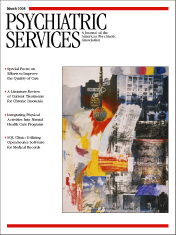Handbook of Clinical Alcoholism Treatment
Alcohol and its abuse have existed for millennia. Alcohol is used to celebrate, to honor, to sanctify, to lubricate the wheels of social intercourse, and to relax. Alcohol abuse and addiction have caused much devastation and destruction to individuals and their families. Societies have tried to control the consumption of alcohol, with limited success. Sadly, despite the health problems, financial ruin, and emotional turmoil that alcoholism wreaks among its sufferers and those who love them, a cure has yet to be found.
Handbook of Clinical Alcoholism Treatment is compiled as a compact yet comprehensive multidisciplinary resource on screening, assessing, diagnosing, and treating alcoholism. Each of the contributing authors writes about the latest information concerning alcoholism from a variety of perspectives and provides a historical summary of alcoholism and its treatment.
A chapter called "Foundations of Alcoholism" looks at the disease from epidemiologic, biological, psychological, and sociocultural perspectives. Further chapters elaborate on laboratory screening, assessment tools, treatment modalities, and treatment settings. In addition, the section on special issues covers dual diagnosis, prevention, special populations, and fetal alcohol syndrome; there is even a manual of brief treatment for use by medical professionals.
The handbook covers a great deal of information, some in great detail, such as the chapter on laboratory screens currently used and being developed for detecting alcohol ingestion. The chapters about treatment focus on the concept of alcoholism as a family disease. Thus family and other significant members of the alcoholic's personal and professional life are encouraged to participate in treatment delivery whenever possible. The chapter on auricular acupuncture as a treatment for alcohol cravings and withdrawal offers an alternative to medication for helping persons with alcoholism through the early recovery process.
The book has a number of editorial deficits that detract from its quality. For example, there are numerous punctuation and technical errors, as well as much redundancy among chapters. Despite these shortcomings, Handbook of Clinical Alcoholism Treatment offers much to the health care professional or substance abuse clinician. All professionals in the medical or mental health field will come across people who are abusing or dependent on alcohol. This handbook provides direction for the health care professional in screening and assessing people for alcohol abuse and for providing for their treatment.
Ms. Stewart is a dual diagnosis clinician for the Bridge of Central Massachusetts, Inc.



